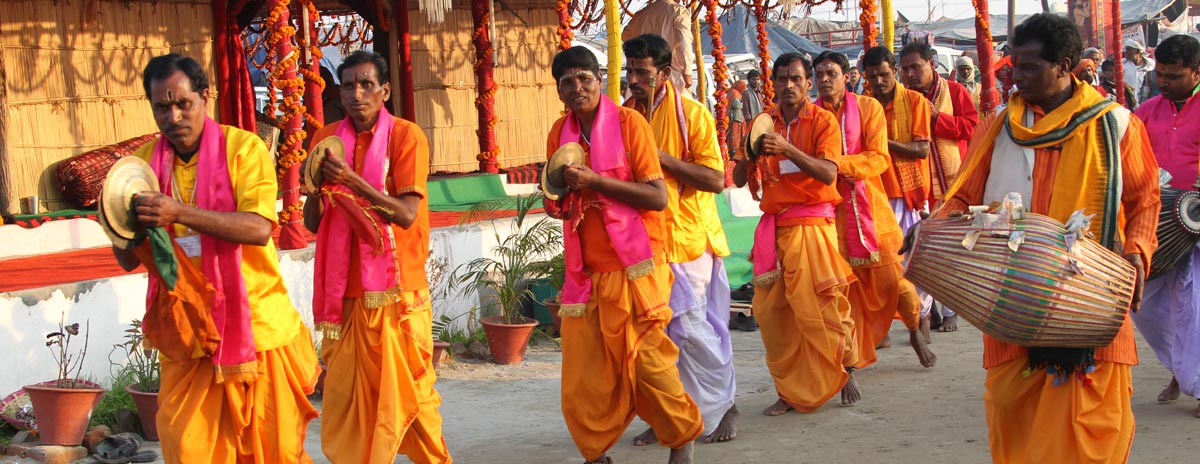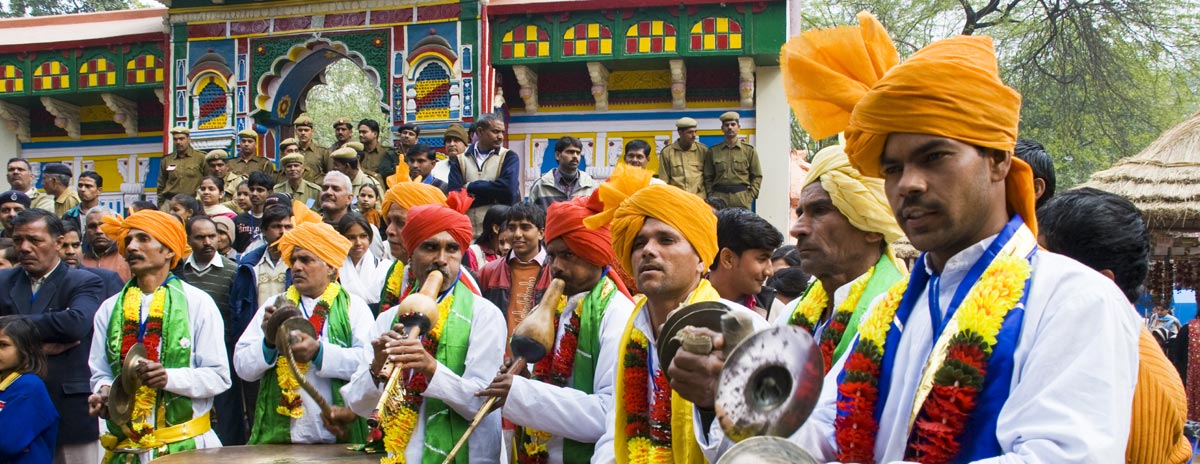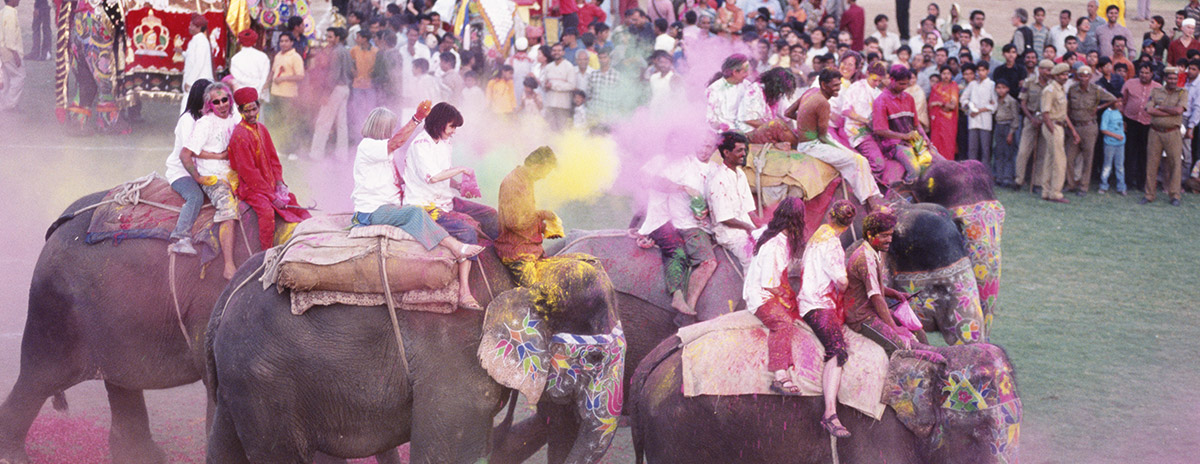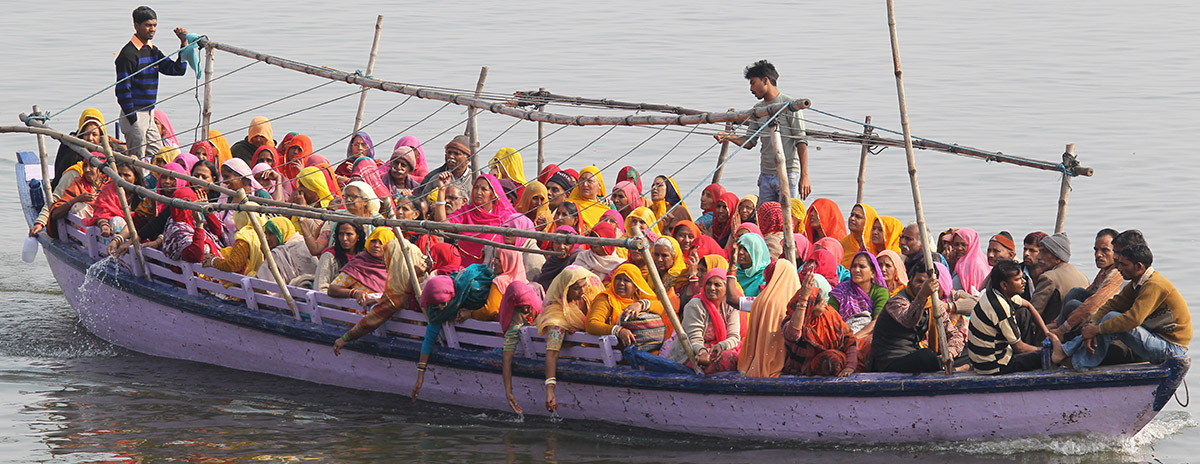India Fairs and Festivals
- Maha Kumbha MelaMakar Sakranti
- Vasant Panchamai
- Maha Shivaratri
- Holi
- Ramanavami
- Hanuman Jayanti
- Raksha Bandhan
- Krishna Janmashthami
- Ganesh Chaturthi
- Pitr Paksha
- Navaratri
- Vijay Dashami( Dussehra)
- Diwali
- Pushkar Mela
- Surajkund Mela
Kumbh Mela
This is a mass Hindu pilgrimage in which Hindus gather to bathe in a sacred river and receive the teachings of knowledgeable swamis, and at times of sages with a deep inner experience. Traditionally, four fairs are widely recognized as the Kumbh Melas: the Haridwar Kumbh Mela, the Allahabad Kumbh Mela, the Nashik-Trimbakeshwar Simhastha and the Ujjain Simhastha, although priests at other places have also claimed their local fairs to be kinds of Kumbh Melas. These four fairs are held periodically at one of the following places by rotation: Haridwar, Allahabad (Prayaga), Nashik district (Nashik and Trimbakeshwar) and Ujjain. The main festival site is each time located on the banks of a river: the Ganges (Ganga) at Haridwar; the confluence (Sangam) of the Ganges and the Yamuna and the now extinct Sarasvati river at Allahabad; the Godavari at Nashik; and the Shipra at Ujjain. Bathing in these rivers is thought to cleanse a person of all his sins.
At any given place, the Kumbh Mela is held once in 12 years. There is a difference of around 3 years between the Kumbh Melas at Haridwar and Nashik; the fairs at Nashik and Ujjain are celebrated in the same year or one year apart. The exact date is determined according to a combination of zodiac positions of the Jupiter, the Sun and the Moon. At Nashik and Ujjain, the Mela may be held while a planet is in Leo (Simha in Hindu astrology); in this case, it is also known as Simhastha.
At Haridwar and Allahabad, an Ardha (Half) Kumbh Mela is held every sixth year; a Maha (Great) Kumbh Mela occurs after 144 years.
The exact age of the festival is uncertain. According to medieval Hindu founding tales, Lord Vishnu let fall drops of Amrita (the drink of immortality) at four places, while transporting it in a kumbha (pot). These four places are identified as the present-day sites of the Kumbh Mela. The name “Mela" literally means the fair, considered as a “melange” (mela) of people.
The festival is one of the largest peaceful gatherings in the world, and considered as the world's largest congregation of religious pilgrims. It is the only place where thirty millions of people are fed without killing any animal. This represents in itself a great hope for the future of a really civilized humanity. There is no accurate method of ascertaining the number of pilgrims, and the estimates of the number of pilgrims bathing on the most auspicious day may greatly vary. The administration of the Mela is suspected to swell the figure to get more subsidy form the Government for the next time… An estimated 30 million people visited the Maha Kumbha Mela in 2013 in Allahabad over a two-month period, including over 10 million on a single day, on 10 February 2013 (the day of Mauni Amavasya, the black moon of February).




